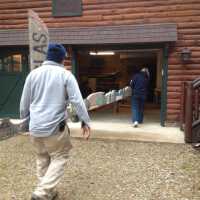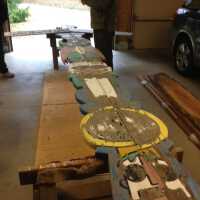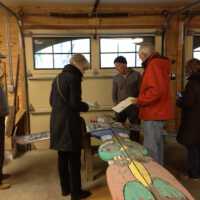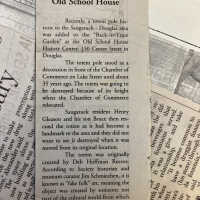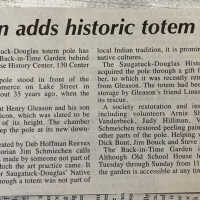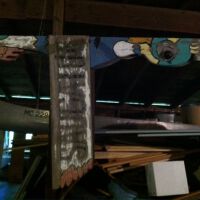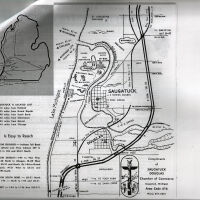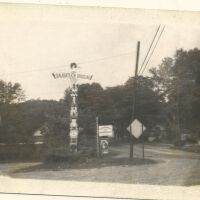Tourism Totem Pole
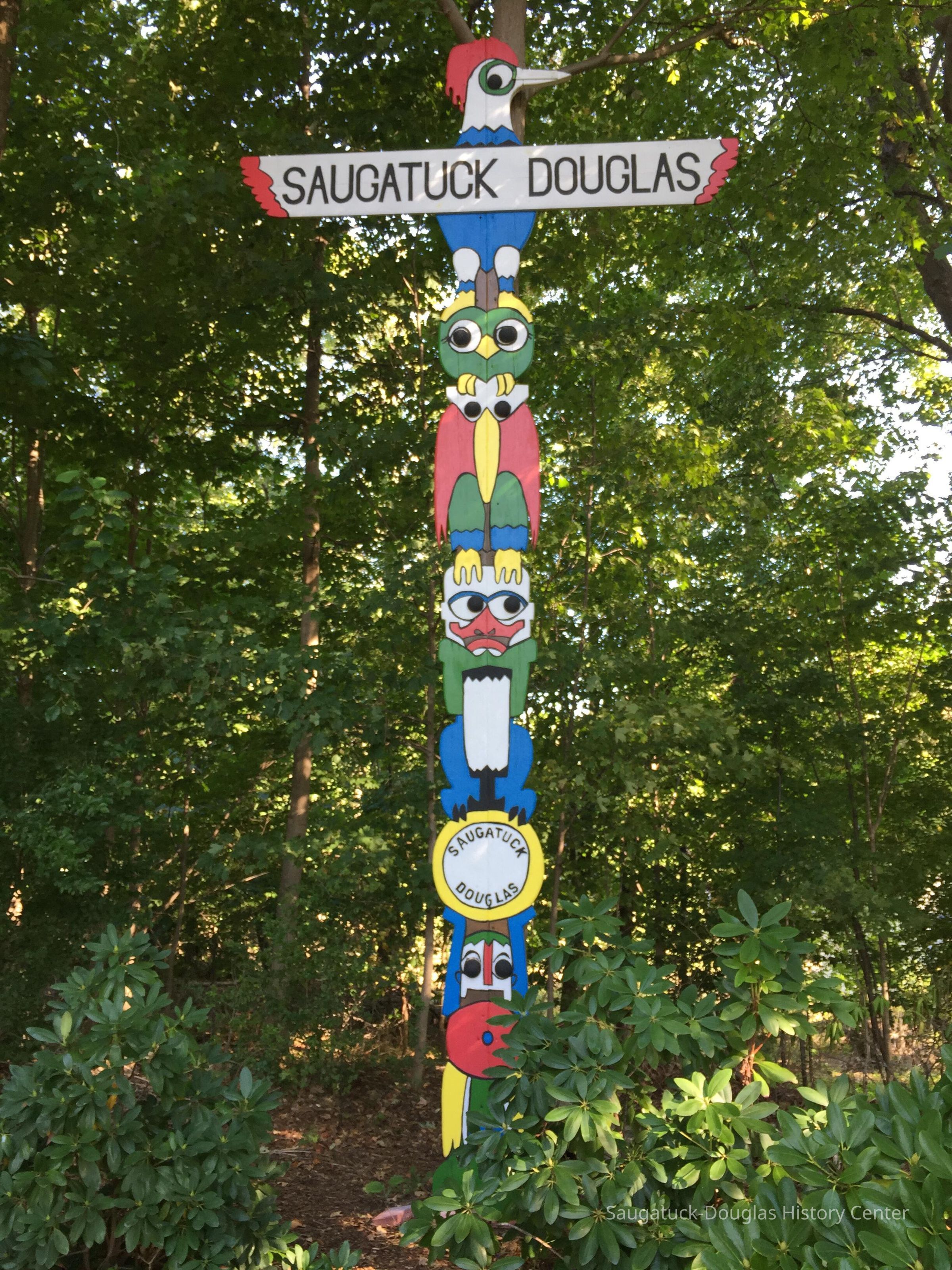
2024.22.19
1930+ Tourism, activites, tours and attractions
Winthers, Sally
2024.22
Found in Collection
Donated to SDHC in 2012. Assigned accession number at garage inventory in 2024.
Hoffman, Debbie
1957
OSH Garden
Text from 2020 interpretive sign: Saugatuck Totem Pole Does this sign look out of place in a garden? It should. This wooden structure once stood at Saugatuck’s Lake Street entrance, grabbing the attention of passing motorists as they drove along Blue Star Highway. In the summer of 1957, local artist Deb Hoffman created this totem pole-inspired sign to welcome visitors to Saugatuck. Hoffman studied at the Sarasota Art School and was a partner in many tourist ventures. She and her husband Richard “Dick” Hoffman created the Island Queen excursion boat and a miniature golf course. From 1957 until the 1970s, this colorful landmark stood tall outside of the Chamber of Commerce. Henry Gleason and Bruce Starring rescued the sign, holding it in storage for many years. It came to the Saugatuck-Douglas History Center in 2012. Volunteers restored the mid-century landmark and it has stood in the Back-In-Time Garden since 2013. When this sign was created, non-Indigenous businesses and communities all across North America erected imitation totem poles as roadside attractions. This copying of Native American culture was done without regard for local traditions: totem poles or gyáa’aang are from the Pacific Northwest coast. Today, the taking or using someone else’s cultural heritage inappropriately or without permission is considered cultural appropriation. What are some of the landmarks in your community? Why were “totem poles” so popular in the 1950s? What should communities do with culturally-appropriated objects? The Native American people of today’s southwest Michigan are the Odawa, Ojibwe, and Bodéwadmi. To learn more about these original Michiganders please visit the interpretive panels on the west side of the Back-In-Time Garden.
10/04/2021
05/06/2025


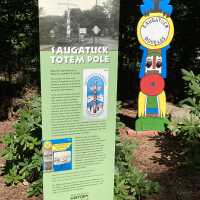
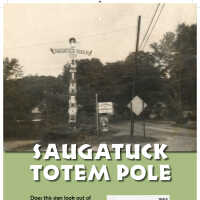
![Totem lower section repainted May 16 2020 [at boat barn in garden]](https://d3f1jyudfg58oi.cloudfront.net/4124/image/a999e820-b669-11ec-b4a2-ed8d3bf143bc-t2kRkx2.tn.jpg)
![Totem upper section after being repainted May 16 2020 [at boat barn in garden]](https://d3f1jyudfg58oi.cloudfront.net/4124/image/a99a3640-b669-11ec-b4a2-ed8d3bf143bc-t2kRky3.tn.jpg)
